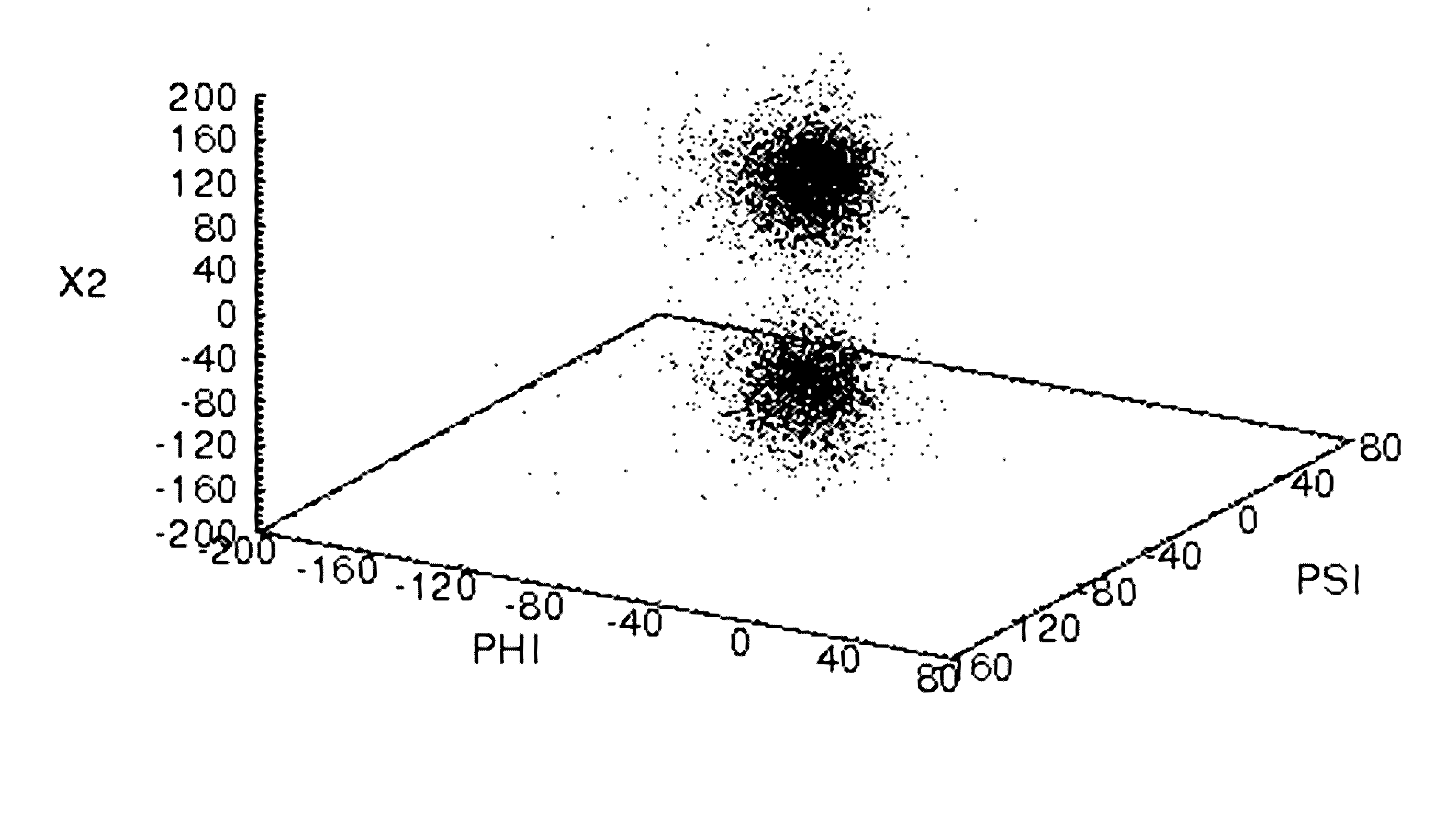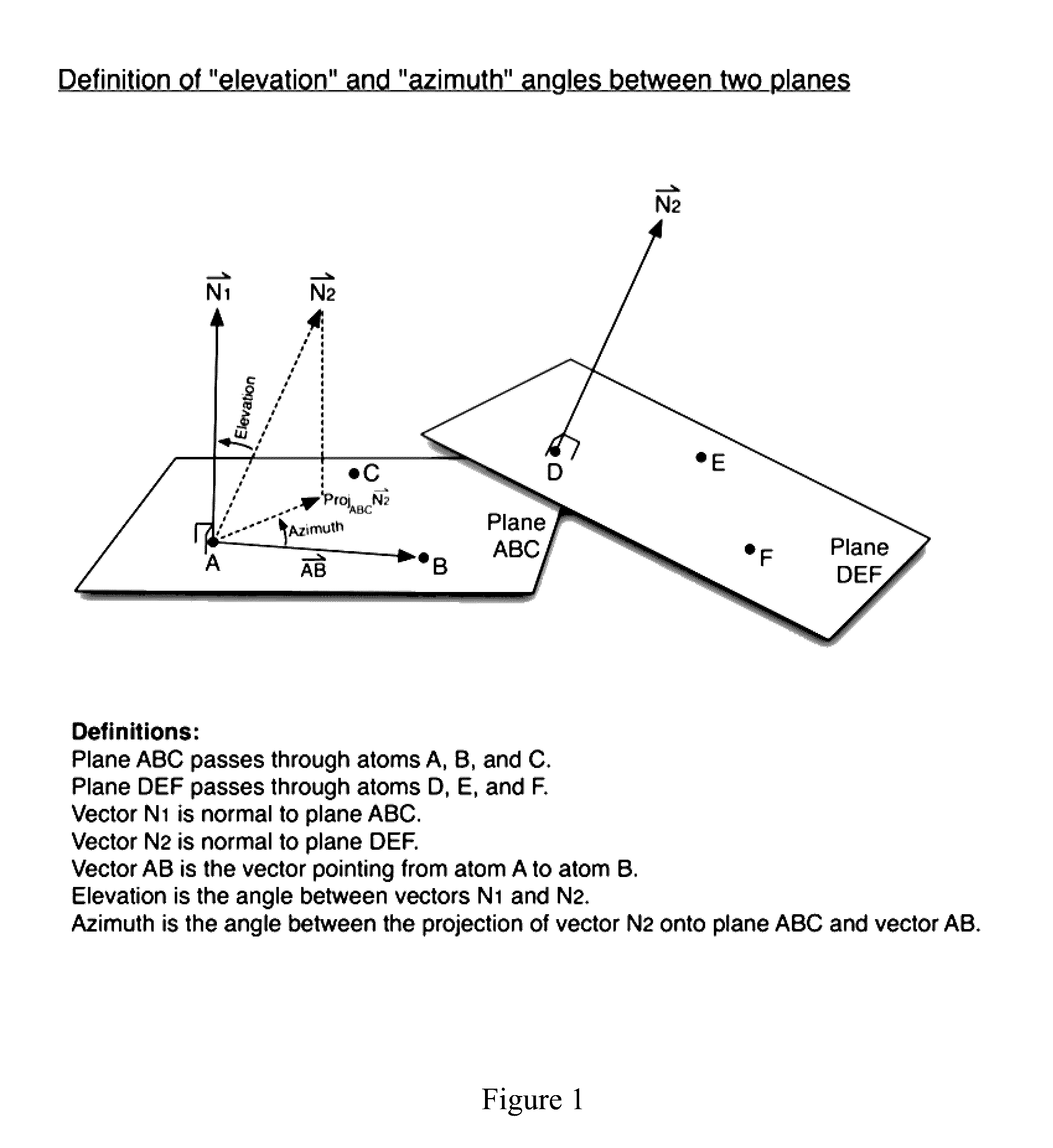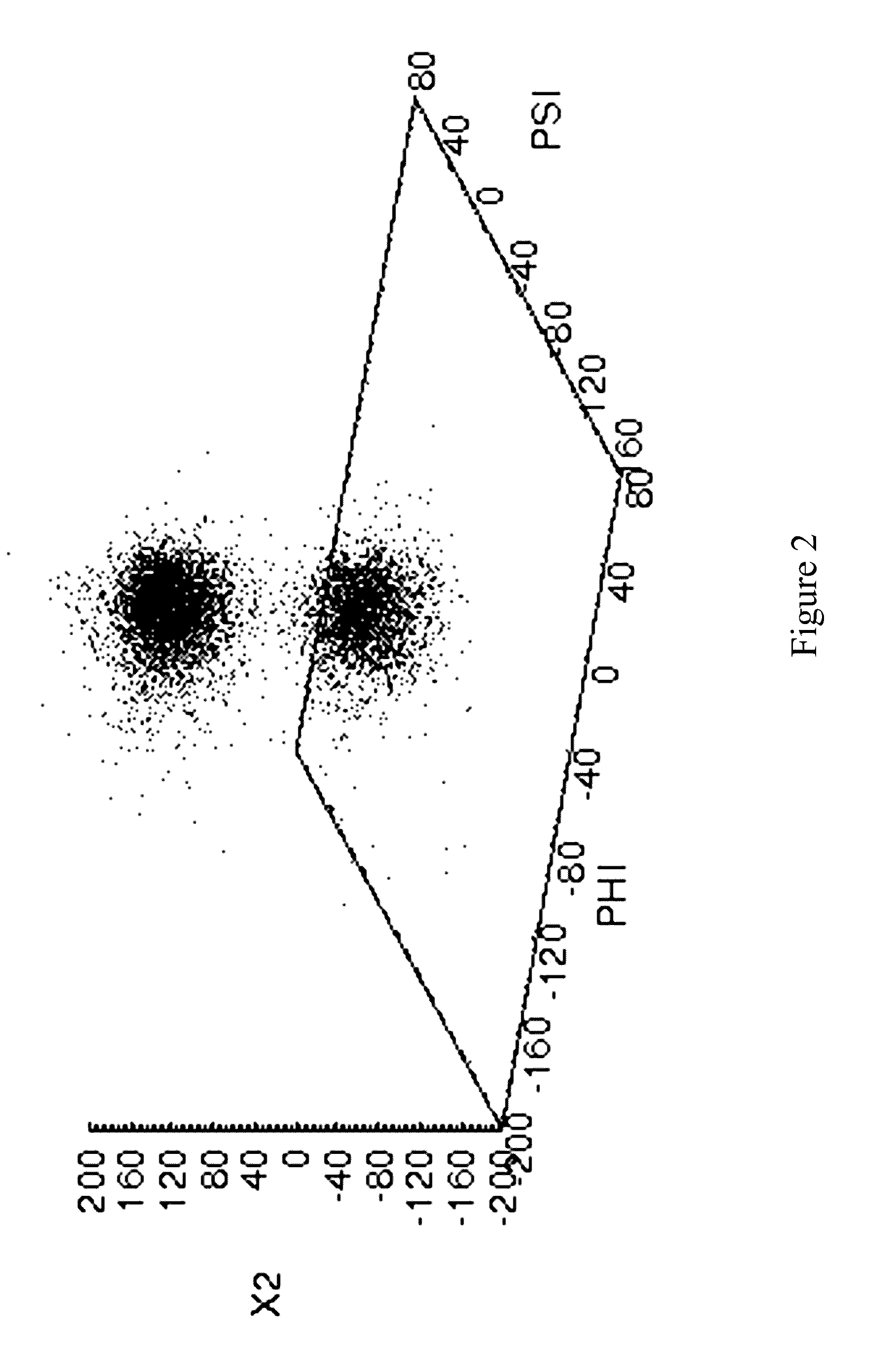Methods For Determining Correlated Residues In A Protein Or Other Biopolymer Using Molecular Dynamics
- Summary
- Abstract
- Description
- Claims
- Application Information
AI Technical Summary
Benefits of technology
Problems solved by technology
Method used
Image
Examples
example
[0147]A 10 ns molecular dynamics simulation has been carried out on cutinase from Fusarium solani pis. The starting structure was derived from a high resolution crystal structure (pdb code: 1CEX.pdb). The saturated mutagensis data available (Brissos et. al., 2008; PEDS, 21(6):387) for this enzyme makes it a good example to highlight the data provided by the methods and applications described above.
[0148]Each residue in cutinase is in a unique environment in the 3-dimensional structure of this chiral biopolymer. This environment defines the likely conformational space available to the residue. The column stacked histogram plots in FIG. 4 panels A to D, present the results of the clustering analysis for every residue. The number of residue conformations for a residue, is indicated by the number of different colored sections for that residue. The respective populations for each residue conformation is shown by the height of the column. From these plots one can quickly identify which re...
PUM
 Login to View More
Login to View More Abstract
Description
Claims
Application Information
 Login to View More
Login to View More - R&D
- Intellectual Property
- Life Sciences
- Materials
- Tech Scout
- Unparalleled Data Quality
- Higher Quality Content
- 60% Fewer Hallucinations
Browse by: Latest US Patents, China's latest patents, Technical Efficacy Thesaurus, Application Domain, Technology Topic, Popular Technical Reports.
© 2025 PatSnap. All rights reserved.Legal|Privacy policy|Modern Slavery Act Transparency Statement|Sitemap|About US| Contact US: help@patsnap.com



